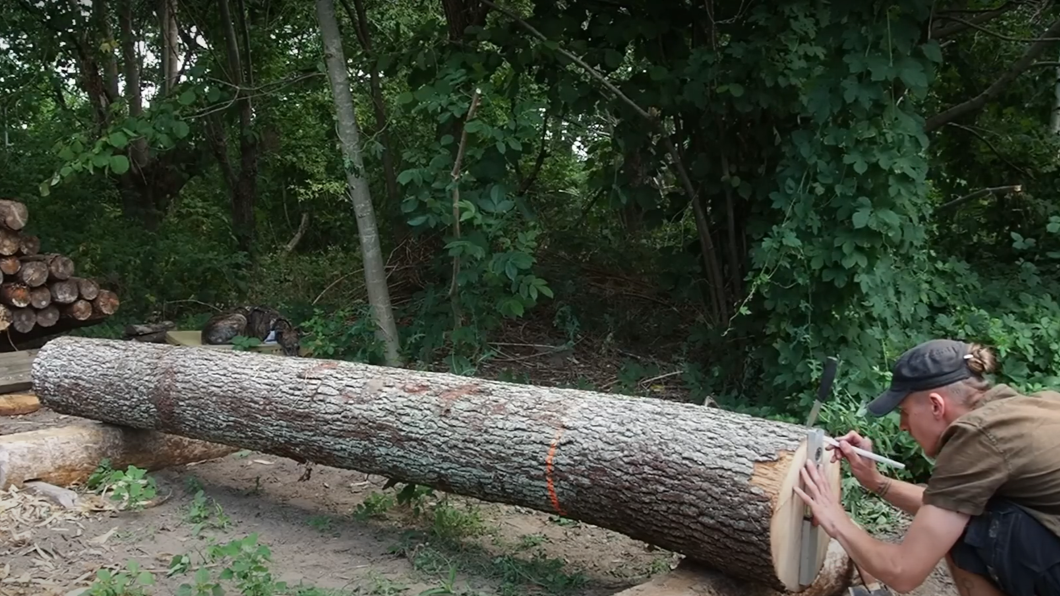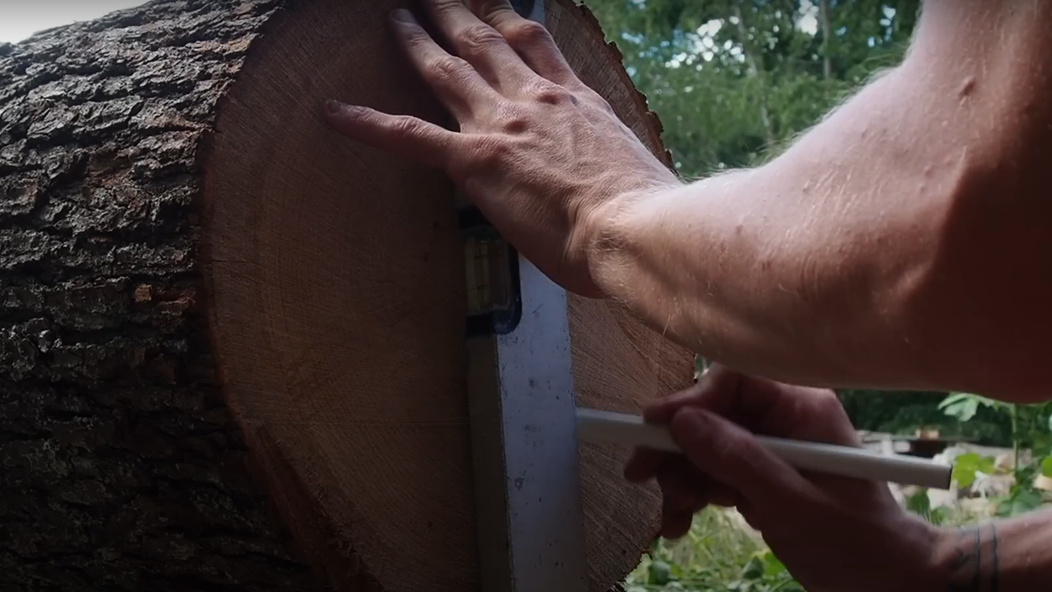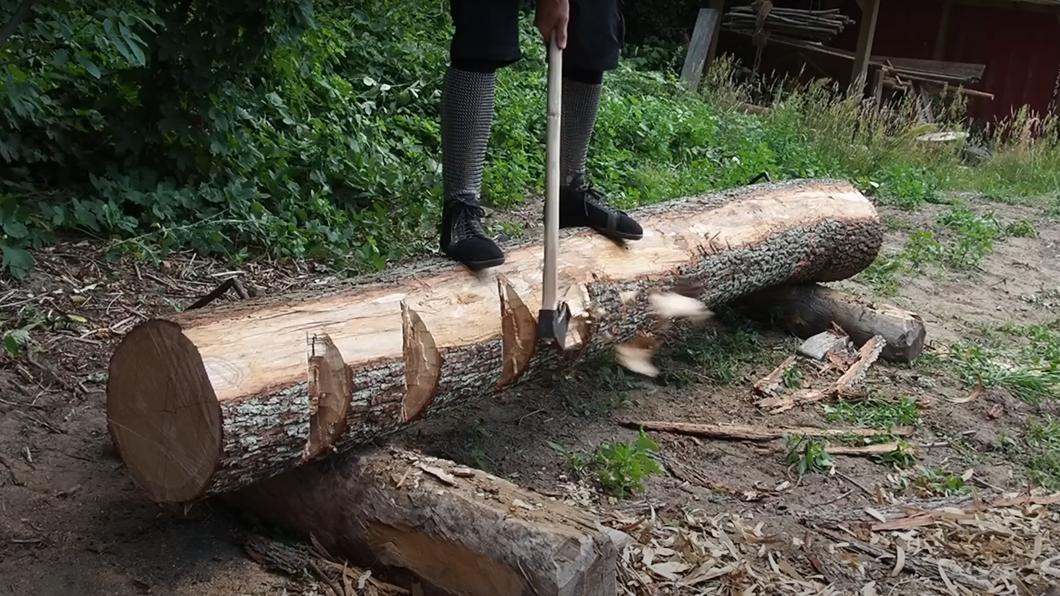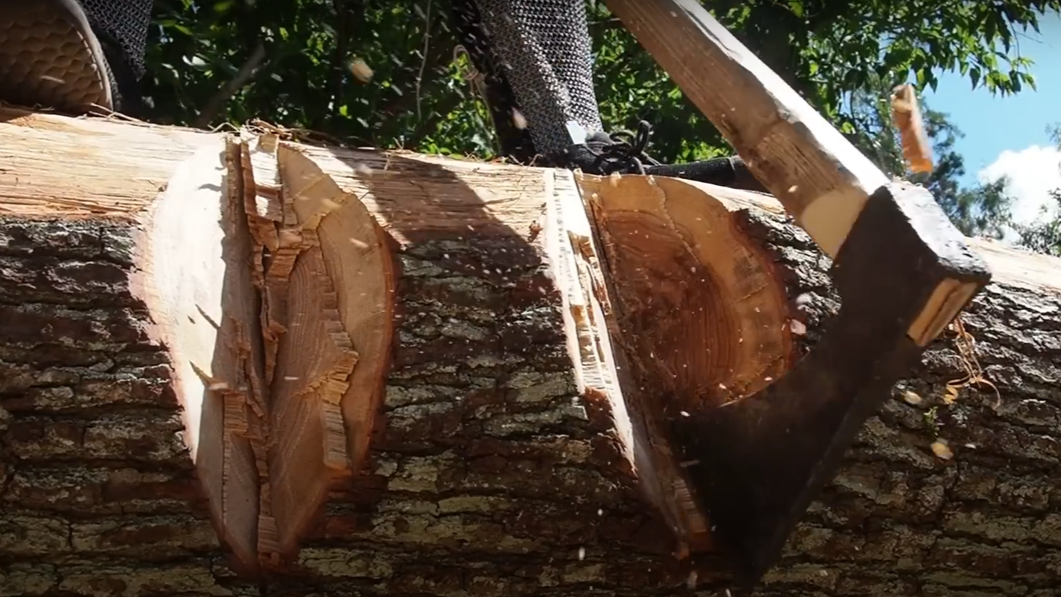Hewing at Museumsdorf Duppel (DE)
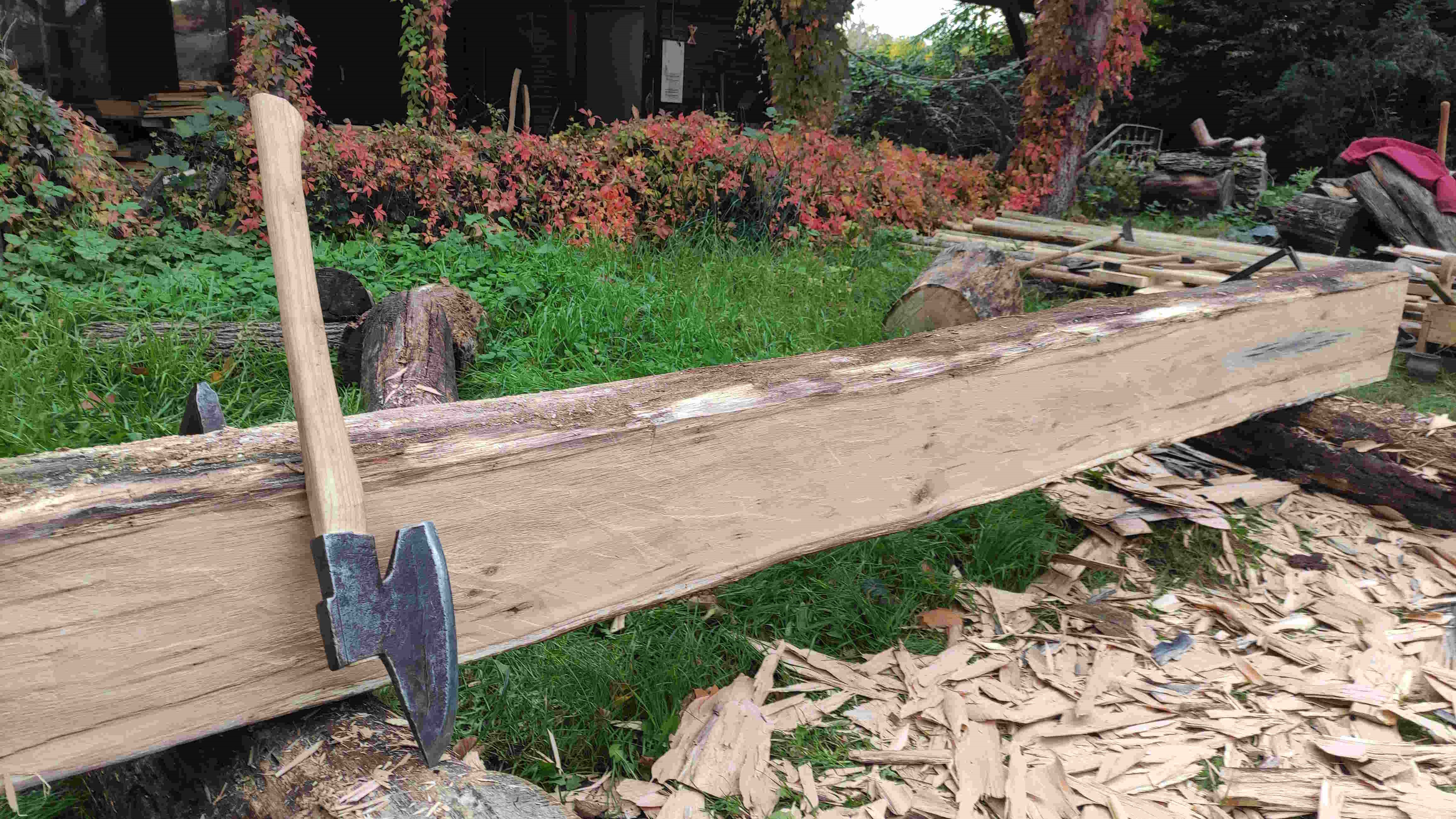
Name of the craft in English: Hewing
Name of the craft in local language: Behauen
Local Language: German
Type of craft:
Traditional (craft is still practised), Historical (craft is no longer widely practised, mainly based on historical sources)
Category of craft: Wood and furniture crafts, Other (Building)
Short description of the craft:
Hewing is the procedure of making a square timber, beginning with a round log. The main tools are axes in various shapes.
What is the historical /archaeological time period of the original craft:
Iron Age, Roman Era, Viking Age, Early Middle Ages, High Middle Ages, Late Middle Ages, Newer Era, 1930-1950, Newest Era
What years was/is the craft practiced: 1000 BC - 2024 AD
Where does the craft originate? Globally
Primary crafter: Ludwig Steiger (DE)
Crafter's role in the documentation process: Daily occupation (more focussed on the craft and the result, less on the public)
The crafter has been practicing this craft for: 5-10 years
Is practicing this craft the main occupation of the crafter: No
What is the main occupation of this crafter: Archaeotechnician
Does the crafter practice any other crafts: Yes
Other crafts: Various woodworking and other traditional crafts
The crafter's motivation for learning this specific craft:
Personal interest, To earn (part of) a living, Learning something new, Developing the skillset (a sense of achievement), Manual working, Producing (unique) things, Doing something useful
Does the crafter have regular contact with colleagues: Yes
Number of colleagues: 5
Which describes the crafter's habitual working area best: Museum
How did the crafter learn this craft:
Self-taught (education without guidance), From one or more persons (informal)
Does the crafter teach this craft: Yes
Where / how the crafter teaches: The crafter teaches one or more persons (informal), The crafter has apprenticeships (semi formal)
This process is: To produce something from scratch
Which of these options best describes the work area during this craft activity: Museum
Name each working technique (keyword):
• shave • chop • hew • split • score • joggle
Note: Every log is very different depending on size and growth features, so time needed to work on - vary.
Phase 1

Number and name of the phase:
1. Fasten
Description of this phase:
In order to hold the log in place, log dogs are fixed into the log and the underlying trestle. Depending on the size of the log and the crafters preference, the trestles can be lower or higher.
Time: 1 min
Phase 2
Number and name of the phase:
2. Scribing
Description of this phase:
The future measurements of the timber are determined in this step. The square is drawn on each end of the log, using a water level or a plumb.
Time: 25 min
Tools used in this phase:
Plummet, Measuring stick
Installations used in this phase:
No
Materials used in this phase:
No
Phase 3
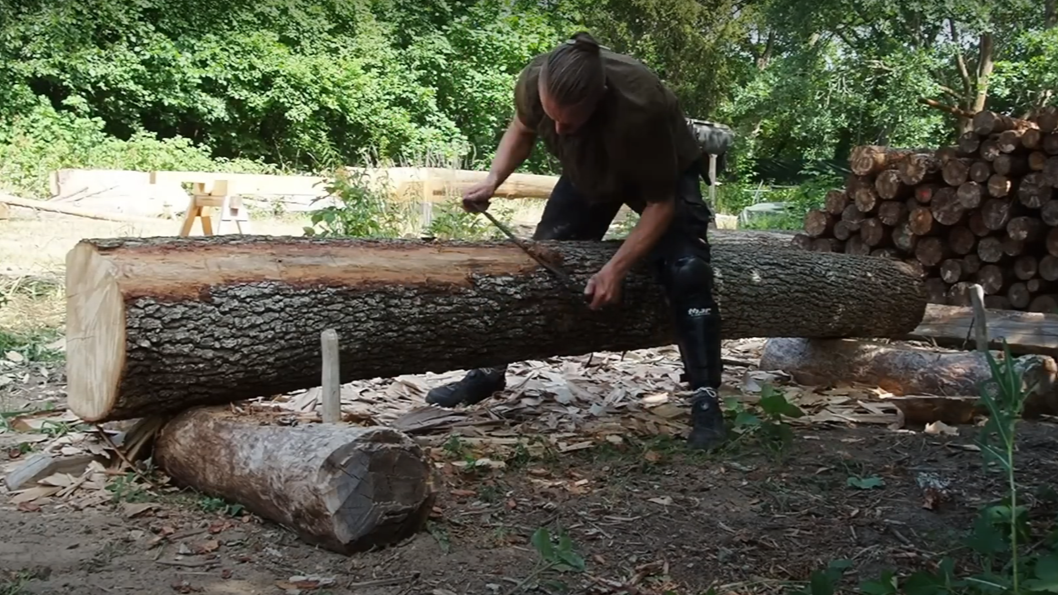
Number and name of the phase:
3. Shaving
Description of this phase:
In order to connect the two squares over the whole length of the log, a part of the bark needs to be shaved off.
Time: 5 min
Tools used in this phase:
Drawknife
Installations used in this phase:
No
Materials used in this phase:
No
Phase 4
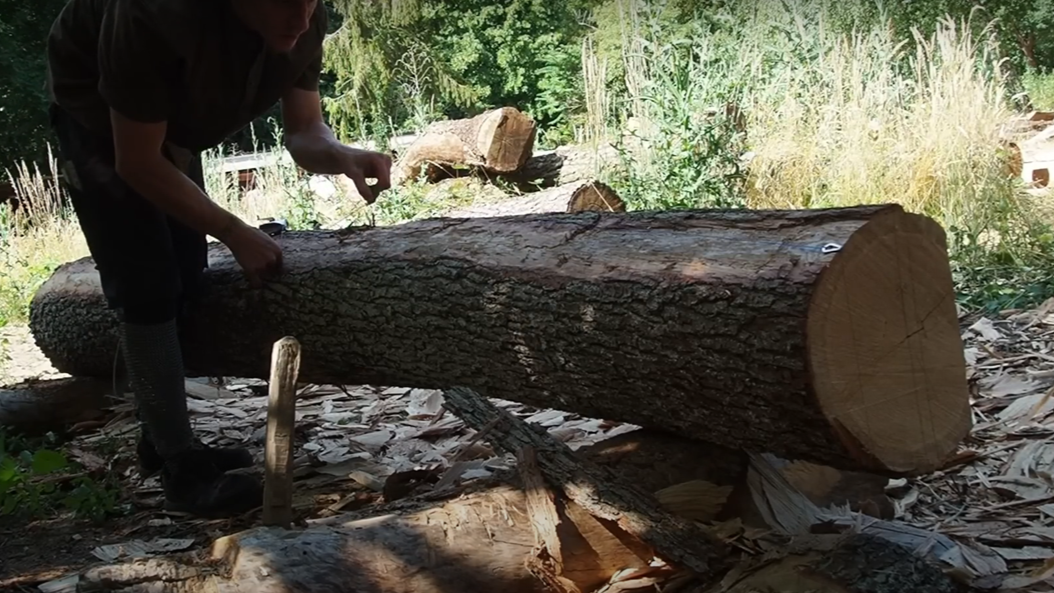
Number and name of the phase:
4. Scribing over the length
Description of this phase:
The corners of the squares are connected over the whole length of the log, using a chalk line. The chalk or powderized coal on the string leaves a visible trace of a straight line on the freshly shaved wood.
Time: 5 min
Tools used in this phase:
Chalk line
Installations used in this phase:
No
Materials used in this phase:
No
Phase 5
Number and name of the phase:
5. Scoring
Description of this phase:
Notches cross to the log are chopped with an axe vertically into the log, close to the drawn line. The distance between them varies, depending on the log.
Time: 20 min
Tools used in this phase:
Felling axe
Installations used in this phase:
No
Materials used in this phase:
No
Phase 6
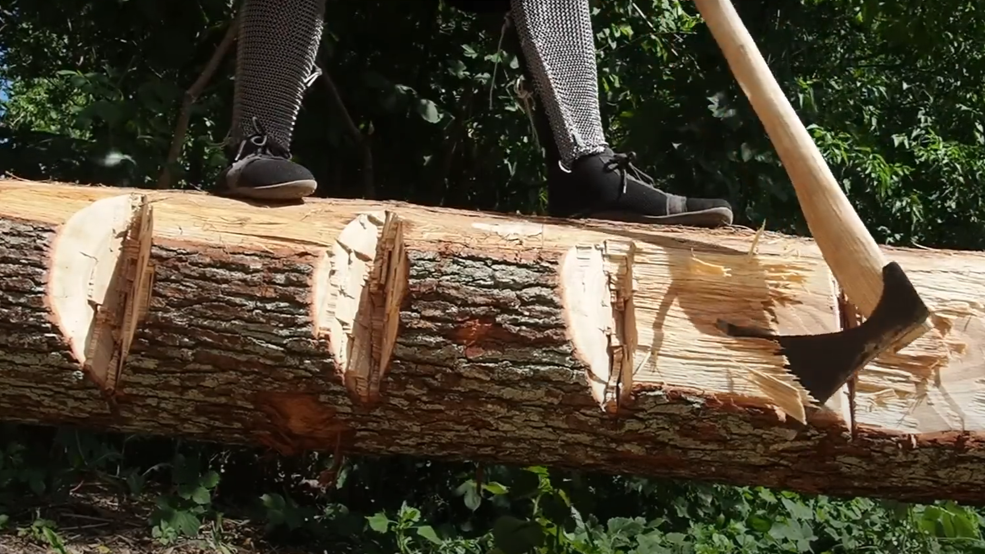
Number and name of the phase:
2. Joggling
Description of this phase:
The parts between the notches are split off lengthwise; leaving a part split, part hewn surface.
Time: 20-30 min
Tools used in this phase:
Felling axe
Installations used in this phase:
No
Materials used in this phase:
No
Phase 7
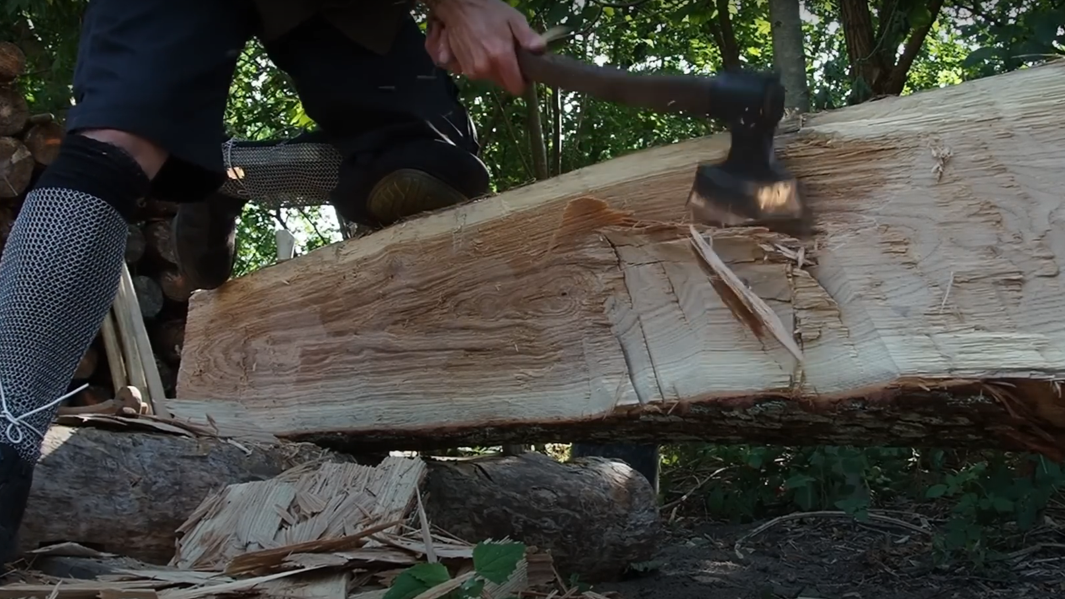
Number and name of the phase:
7. Cleaning the surface
Description of this phase:
The rough surface is cleaned to the desired surface, getting to the drawn line.
Time: 60 min
Tools used in this phase:
Hewing axe
Installations used in this phase:
No
Materials used in this phase:
No
Phase 8
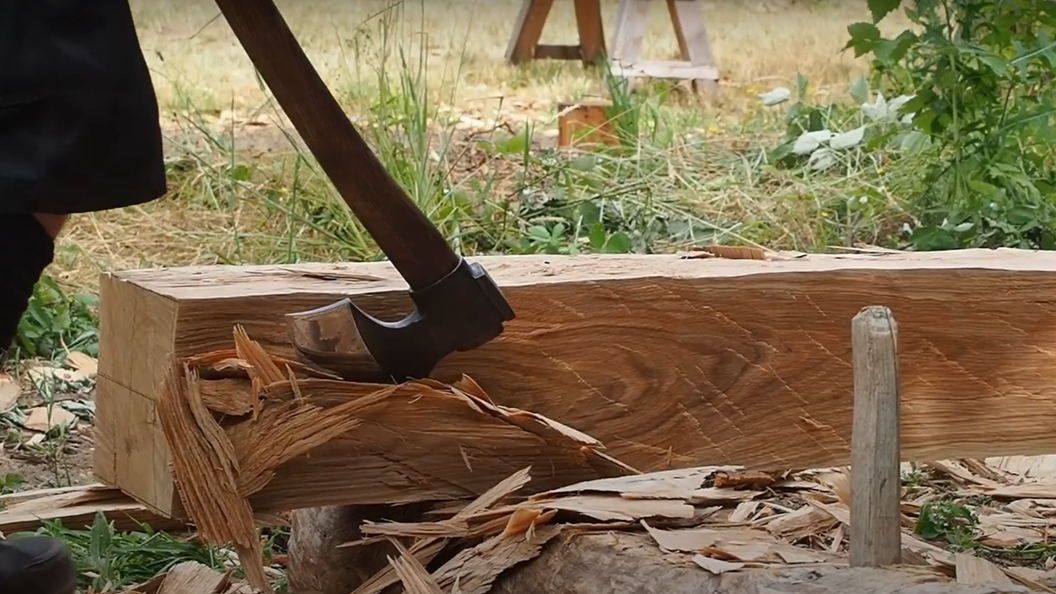
Number and name of the phase:
8. Repeating the steps 5-7, for other 3 sides
Description of this phase:
With one side being done, the log is then turned and the steps are repeated. Depending on the order of the surfaces being worked on, the repeating starts at the shaving or the scribing over the length. By having done this on all four sides, a squared timber is being made.
Time: See above (repeating). Every side is faster than the one before, because the surface gets smaller.
Tools used in this phase:
See above
Installations used in this phase:
See above
Materials used in this phase:
See above
Does the crafter model this craft activity on historical or archaeological sources (is the product an exact replica of a specific object): No
Did the crafter diverge from historical/archaeological accuracy to adapt the process: Yes
Describe any changes to tools, materials and processes:
Some of the axes are no replicas but rather more recent models. The chalk line is modern.
Describe the crafter's reasons for these changes:
The more recent axes are somewhat more efficient, sometimes cheaper than replicas. The modern chalk line is easier to use.
Has the crafter developed new techniques or improved the activity over time: Yes
Describe changes to the craft activity:
With more experience the whole process gets quicker. Preferences in axes are developed, sometimes modifying them or using different ones.
Describe changes to the final product or outcome:
Different axes leave different tool marks, resulting in different surface structures.
Describe the reasons for these changes:
Experience, requirements and personal preference
Has the crafter identified any gaps in their knowledge or experience: Yes
Describe what the crafter would like to learn about the archaeological/historical backgrounds for the craft activity:
More knowledge about archaeological evidence of hewn timber, the chronologic and origin of it.
Describe what the crafter would like to learn about the practical craft activity:
Which tools are used in other countries and when, how different wood types feel.
Please describe the motivation:
Personal interest and professional interest
Describe the crafter's approach to a tidy workshop, hygiene and other best practices:
A tidy workplace means less danger of tumbling and falling. Measures for work safety include wearing (modern) protectors like leg and toe protection.
Describe the crafter's approach to clean-up and disposal of waste products:
The waste is sorted into size, the smaller shavings are disposed via a compostation plant.
Describe any by-products of the craft activity that could have further use:
Bigger chunks are stored and dried for firewood.

The result is a square timber with four visibly hewn surfaces. It can be processed further, either dividing it into smaller parts or being assembled.
Name of the product in English: Square Timber
Name of the product in local language: Kantholz
Describe the product:
The result is a square timber with four visibly hewn surfaces. It can be processed further, either dividing it into smaller parts or being assembled.
What are the outcome or product's purposes:
Practical use, Educational purposes
Describe how the product or outcome is used:
It is used as a part in a building
Describe who typically uses the product or outcome:
Carpenters, builders
In which context is the product or outcome typically used:
Cultural and build heritage preservation, museums
What happens with the product or outcome? Is it distributed and how:
Not distributed


